📞+86 153 7530 2641 📧 hongjing.Wang@feichuncables.com

Durable (N)TSCGEWOEU Crane Reeling Cable for Stackers, Reclaimers & Ship Unloaders in Mining & Port Systems
Discover high-performance (N)TSCGEWOEU reeling crane cable designed for stackers, reclaimers, ship unloaders, and mining equipment. Engineered for extreme torsional stress, heavy-duty reeling systems, and dynamic power supply in port and mining environments. Ideal for mobile equipment requiring robust and flexible energy transmission.
hongjing.Wang@Feichun
7/28/202511 min read
In the demanding world of industrial operations, reliable power transmission is the backbone of efficient material handling systems. From bustling port terminals to expansive mining operations, heavy equipment requires uninterrupted energy supply to maintain productivity and safety standards. Reeling cables serve as the critical link between stationary power sources and mobile machinery, enabling seamless operation of stackers, reclaimers, ship unloaders, and other essential equipment.
The challenges faced in these environments are formidable: extreme weather conditions, constant mechanical stress, chemical exposure, and the need for continuous operation under heavy loads. Traditional cable solutions often fall short, leading to costly downtime, maintenance issues, and safety concerns. This is where specialized crane reeling cables become indispensable.
The (N)TSCGEWOEU crane reeling cable represents a breakthrough in power transmission technology, specifically engineered to meet the rigorous demands of port and mining systems. This advanced cable solution combines superior materials, innovative design, and proven performance to deliver reliable energy transmission in the most challenging industrial environments. With its exceptional durability and flexibility, this heavy-duty mining crane cable sets new standards for operational excellence.
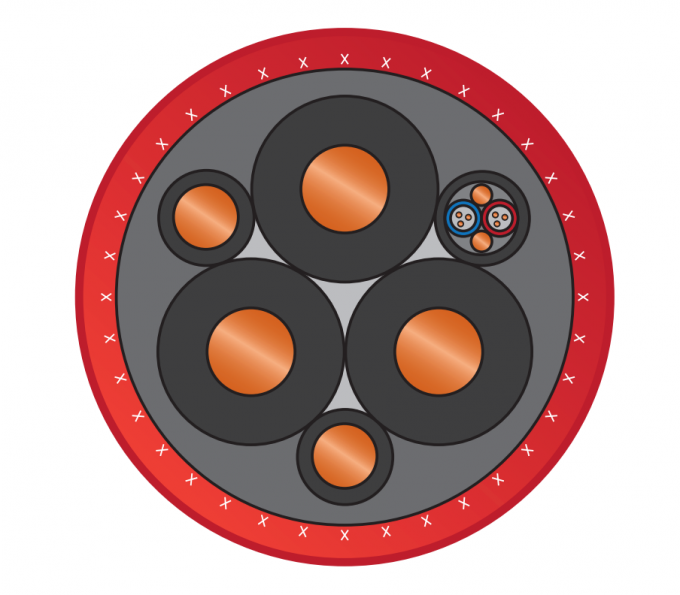

Key Features of (N)TSCGEWOEU Crane Reeling Cable
The (N)TSCGEWOEU crane cable incorporates cutting-edge technology and premium materials to deliver unmatched performance in demanding applications. At its core, the cable features EPR (Ethylene Propylene Rubber) insulation, renowned for its exceptional electrical properties and resistance to environmental degradation. This insulation system ensures reliable power transmission while maintaining flexibility under extreme conditions.
The cable's voltage rating spans from 0.6/1kV up to 18/30kV, with specific options including Uo/U = 3.6/6.0 kV, 6.0/10.0 kV, 8.7/15.0 kV, and 12.0/20.0 kV configurations. This versatility allows for seamless integration across various industrial applications, from low-voltage control systems to high-power transmission requirements.
A distinctive feature of this rubber insulated crane cable for reeling drums is its integrated tinned copper braid, which provides superior electromagnetic compatibility (EMC) performance and mechanical protection. The textile anti-torsion braiding system ensures the cable maintains its structural integrity during continuous reeling operations, preventing premature failure due to torsional stress.
The outer sheath, manufactured from flame-retardant rubber compound in a distinctive red color, offers comprehensive protection against environmental hazards. This flexible port crane cable demonstrates remarkable resistance to UV radiation, oil contamination, ozone exposure, and harsh weather conditions. The cable's high flexibility rating, with a minimum bending radius of just 6 times the overall diameter, enables smooth operation around reeling drums and pulley systems.
Temperature performance is exceptional, with the cable maintaining functionality across a range of -40°C to +90°C for fixed installations and -25°C to +80°C during dynamic flexing operations. This wide operational window ensures reliable performance in extreme climates, from arctic mining operations to tropical port facilities.
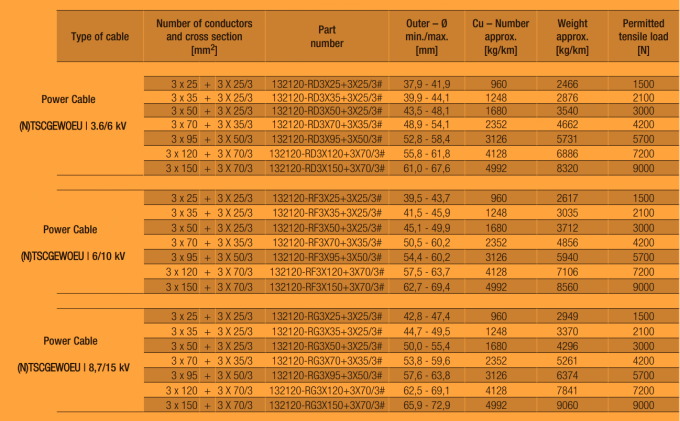


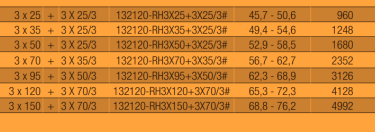
Applications Across Heavy Industries
The versatility of the (N)TSCGEWOEU crane cable makes it an ideal solution across numerous heavy industrial applications. In bulk material handling facilities, this reeling crane cable for stackers provides reliable power transmission for automated stacking systems that organize coal, iron ore, grain, and other commodities. The cable's robust construction withstands the constant movement and positioning required in these high-volume operations.
Ship unloader reeling system cable applications represent another critical use case, where the cable must endure the marine environment's corrosive effects while maintaining reliable power supply to massive unloading equipment. Port terminals rely on this technology to ensure continuous operation of ship-to-shore cranes and bulk unloaders that process millions of tons of cargo annually.
Mining operations present some of the most challenging environments for electrical equipment. This heavy-duty mining crane cable excels in powering mobile crushers, conveyor systems, and dragline excavators that operate continuously in dusty, abrasive conditions. The cable's resistance to mechanical stress and environmental contamination ensures minimal downtime in these critical operations.
The cable's compatibility with motorized reeling drums and festival systems extends its application range to include construction cranes, overhead traveling cranes, and specialized material handling equipment. Its ability to handle travel speeds up to 180 m/min, with higher speeds available upon request, makes it suitable for high-speed applications where rapid equipment positioning is essential.
In port container terminals, gantry cranes rely on this crane power cable for reclaimers to maintain precise positioning and lifting capabilities. The cable's EMC compliance ensures interference-free operation of sophisticated control systems that coordinate complex loading and unloading sequences.

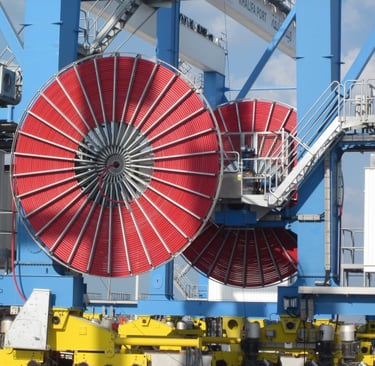
Crane Cable Performance Under Harsh Conditions
The demanding nature of industrial environments requires cables that can withstand extreme mechanical and environmental stresses. The (N)TSCGEWOEU crane cable demonstrates exceptional performance under conditions that would quickly degrade conventional cables.
High mechanical stress tolerance is achieved through the cable's multi-strand conductor configuration and reinforced construction. The cable can handle significant tensile forces generated during vertical reeling operations while maintaining electrical continuity. Torsional stress resistance, critical for reeling applications, is enhanced by the specialized textile anti-torsion braiding that prevents conductor displacement during continuous rotation.
The cable's performance in both vertical and horizontal reeling configurations makes it versatile for various installation methods. Whether deployed on overhead crane systems or ground-level reeling drums, the cable maintains consistent performance characteristics. This adaptability reduces inventory requirements and simplifies maintenance procedures.
EMC (Electromagnetic Compatibility) performance is crucial in modern industrial environments where sensitive electronic control systems operate alongside high-power equipment. The integrated tinned copper braid provides effective electromagnetic shielding, preventing interference that could disrupt automated systems or communication networks.
Environmental resistance extends beyond basic weather protection. The cable's ozone resistance prevents degradation in areas with high electrical activity, while oil resistance ensures performance in hydraulic-rich environments common in heavy machinery applications. UV resistance maintains cable integrity in outdoor installations exposed to intense sunlight.
The cable's flame-retardant properties provide an additional safety margin in industrial environments where fire hazards exist. Compliance with flame propagation standards ensures that the cable will not contribute to fire spread, protecting both equipment and personnel.
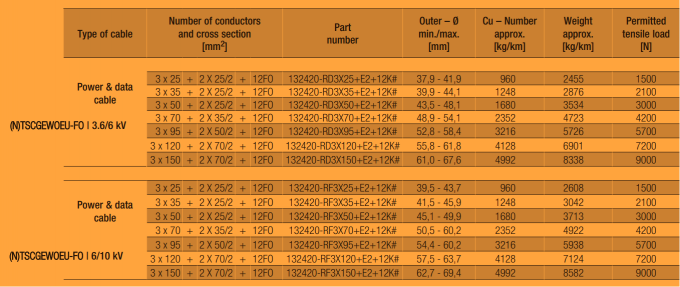


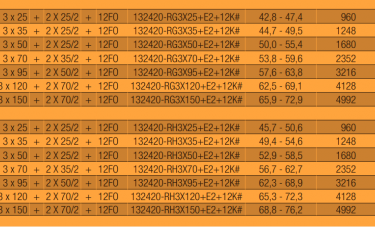
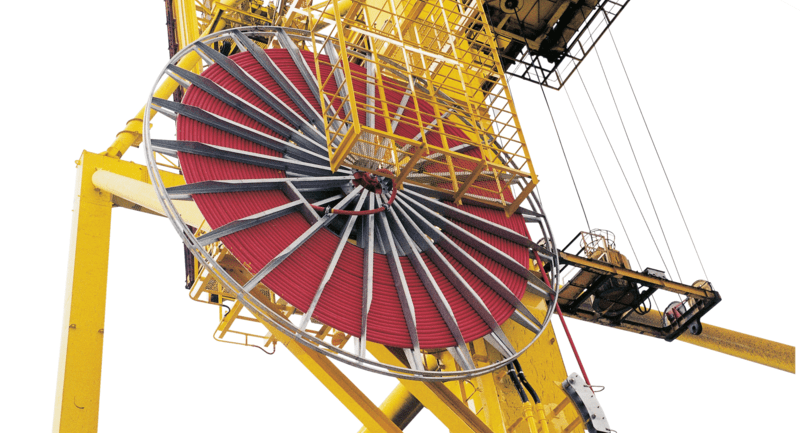

Standards and Certifications
Quality assurance and regulatory compliance are fundamental aspects of the (N)TSCGEWOEU crane cable design and manufacturing process. The cable is manufactured according to DIN VDE 0250-813/814 standards, which specify requirements for rubber-sheathed cables intended for use in reeling applications. These standards ensure consistent quality, performance, and safety characteristics across all production batches.
CE marking demonstrates compliance with European Conformity directives, indicating that the cable meets health, safety, and environmental protection standards for the European market. This certification facilitates international trade and provides assurance of product quality to global customers.
RoHS (Restriction of Hazardous Substances) compliance ensures that the cable's manufacturing process and materials meet environmental protection standards by limiting the use of specific hazardous materials. This compliance is increasingly important as industries focus on sustainable practices and environmental responsibility.
Fire and flame propagation testing validates the cable's performance under extreme conditions. These tests simulate real-world fire scenarios to ensure that the cable's flame-retardant properties function as designed. The results provide confidence that the cable will perform safely in emergency situations.
The VDE 0250 Part 814 certification specifically addresses the unique requirements of reeling cables, including mechanical stress tolerance, flexibility maintenance, and electrical performance under dynamic conditions. This specialized certification distinguishes the cable from standard power cables and confirms its suitability for demanding reeling applications.
Quality control procedures throughout the manufacturing process ensure consistency and reliability. Each production batch undergoes comprehensive testing to verify electrical properties, mechanical characteristics, and environmental resistance before release to customers.
Why Choose This Crane Reeling Cable?
The selection of appropriate reeling cables significantly impacts operational efficiency, maintenance costs, and safety performance in industrial applications. The (N)TSCGEWOEU crane cable offers compelling advantages that justify its selection over conventional alternatives.
Long service life is achieved through superior materials and construction techniques that resist wear and environmental degradation. The cable's robust design minimizes the frequency of replacement, reducing lifecycle costs and operational disruptions. Field experience demonstrates service life extensions of 50-100% compared to standard cables in similar applications.
Low maintenance requirements result from the cable's resistance to common failure modes. The flame-retardant rubber sheath requires minimal cleaning or protective treatments, while the internal construction maintains electrical properties without periodic reconditioning. This reliability translates to reduced maintenance personnel requirements and lower operational costs.
Enhanced safety is paramount in heavy industrial operations where equipment failure can have serious consequences. The cable's flame-retardant properties, EMC compliance, and mechanical durability contribute to safer working environments. Emergency response capabilities are improved when electrical systems maintain integrity during crisis situations.
Cost-efficient solution encompasses both initial investment and long-term operational costs. While the initial cost may exceed basic cable alternatives, the total cost of ownership is typically lower due to extended service life, reduced maintenance, and decreased downtime. The cable's reliability prevents costly production interruptions that can far exceed equipment costs.
The dynamic energy transmission capabilities of this EMC compliant crane reeling cable enable more sophisticated automation and control systems. The cable's stable electrical properties support advanced monitoring and diagnostic systems that optimize equipment performance and predict maintenance requirements.
Versatility in application reduces inventory complexity and simplifies procurement processes. A single cable type can serve multiple applications within a facility, streamlining maintenance procedures and reducing spare parts inventory.
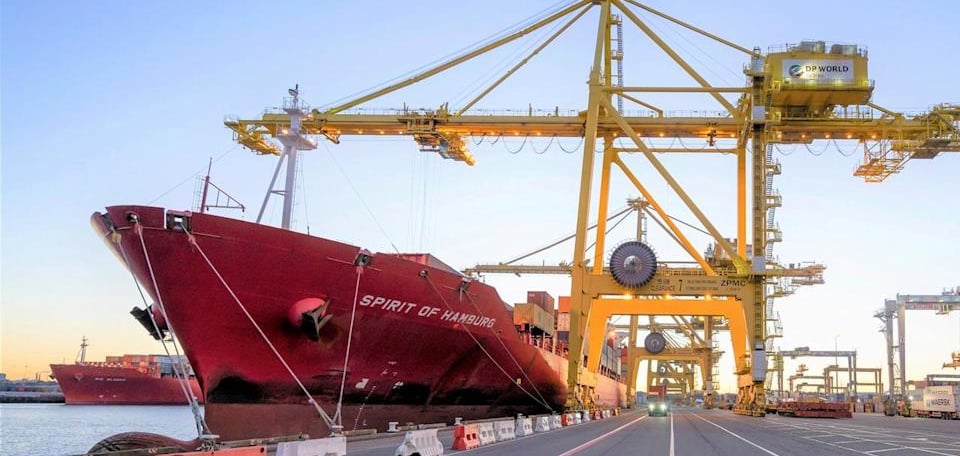

Technical Specifications and Performance Data
Understanding the technical capabilities of the (N)TSCGEWOEU crane cable is essential for proper application selection and system design. The cable's construction incorporates multiple performance-enhancing features that distinguish it from conventional power cables.
Conductor configuration utilizes fine-wire stranding that maximizes flexibility while maintaining current-carrying capacity. The tinned copper construction provides superior corrosion resistance and connection reliability. Conductor sizes are available in various configurations to match specific power requirements and mechanical constraints.
Insulation system based on EPR technology offers exceptional dielectric properties and temperature stability. The insulation maintains its electrical characteristics across the cable's operational temperature range, ensuring consistent performance in varying environmental conditions. Insulation thickness is optimized for each voltage rating to provide appropriate safety margins while minimizing overall cable diameter.
Sheath compound formulation balances multiple performance requirements including mechanical protection, environmental resistance, and flame retardancy. The red coloration provides high visibility for safety purposes while maintaining UV stability. Sheath thickness provides adequate protection without compromising flexibility.
Mechanical properties include tensile strength ratings that exceed typical installation and operational stresses. The cable can withstand significant pull forces during installation and maintain structural integrity under operational loads. Flexural fatigue resistance ensures extended service life in reeling applications where continuous bending occurs.
Electrical characteristics encompass voltage rating, current capacity, and impedance values that enable proper system design. The cable's capacitance and inductance properties are optimized for power transmission while minimizing electromagnetic emissions. Insulation resistance values ensure safety and reliability throughout the cable's service life.
Installation and Maintenance Best Practices
Proper installation and maintenance procedures are critical for realizing the full performance potential of the (N)TSCGEWOEU crane cable. Following established guidelines ensures optimal service life and reliable operation while maintaining safety standards.
Installation considerations begin with proper cable routing and support systems. The cable's minimum bending radius must be observed to prevent damage to internal components. Reeling drum design should accommodate the cable's diameter and flexibility characteristics while providing adequate support during operation.
Environmental protection extends beyond the cable's inherent resistance properties. Installation practices should minimize exposure to mechanical damage, chemical contamination, and extreme temperatures where possible. Proper drainage and ventilation help maintain optimal operating conditions.
Connection practices require attention to conductor preparation, termination techniques, and environmental sealing. Proper tool selection and installation procedures prevent connection-related failures that could compromise system reliability. Regular connection inspection and maintenance ensure continued performance.
Monitoring systems can provide early warning of developing problems before they result in failures. Modern diagnostic equipment can assess insulation condition, connection integrity, and mechanical wear patterns. Implementing predictive maintenance programs based on cable condition monitoring extends service life and prevents unexpected failures.
Documentation and record keeping support effective maintenance programs by tracking cable performance, maintenance activities, and replacement schedules. This information enables optimization of maintenance intervals and identification of systemic issues that may affect multiple installations.
Conclusion
The (N)TSCGEWOEU crane reeling cable represents a significant advancement in power transmission technology for demanding industrial applications. Its combination of superior materials, innovative design, and proven performance makes it an ideal solution for stackers, reclaimers, ship unloaders, and mining equipment operating in challenging environments.
The cable's exceptional durability, flexibility, and environmental resistance deliver tangible benefits including extended service life, reduced maintenance requirements, and enhanced operational safety. Its compliance with international standards and certifications provides assurance of quality and performance consistency.
For organizations seeking to optimize their material handling operations while minimizing lifecycle costs and maximizing safety, the (N)TSCGEWOEU crane cable offers a compelling solution. Its proven performance in demanding applications demonstrates the value of investing in premium cable technology that delivers reliable service when operational continuity is critical.
The versatility of this rubber insulated crane cable for reeling drums across multiple industrial sectors, combined with its technical excellence and compliance with rigorous standards, positions it as the preferred choice for discerning engineers and facility managers. When equipment downtime is not an option, choosing the right cable technology becomes a strategic decision that impacts operational success.
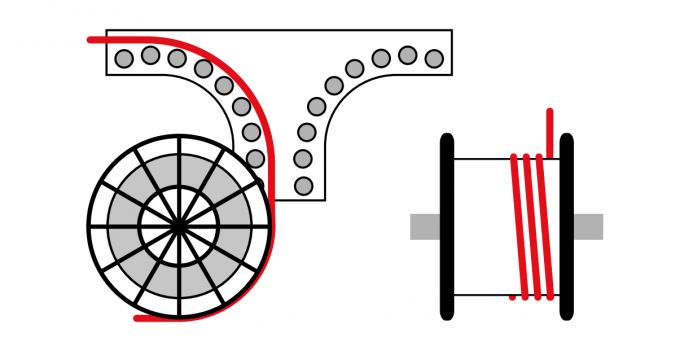


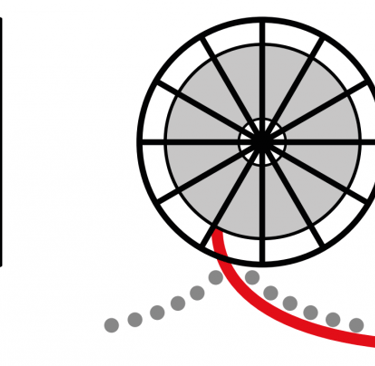
Frequently Asked Questions (FAQ)
Q: What are the available voltage ratings for the (N)TSCGEWOEU crane reeling cable?
A: The cable is available in multiple voltage configurations including Uo/U = 3.6/6.0 kV, 6.0/10.0 kV, 8.7/15.0 kV, and 12.0/20.0 kV, providing flexibility for various power system requirements.
Q: What is the operational temperature range for this crane cable?
A: The cable operates effectively from -40°C to +90°C for fixed installations and -25°C to +80°C during dynamic flexing operations, making it suitable for extreme climate conditions.
Q: How fast can this reeling crane cable travel during operation?
A: The standard travel speed capability is up to 180 m/min, with higher speeds available upon request for specialized applications requiring rapid equipment positioning.
Q: What makes this cable suitable for outdoor marine environments?
A: The cable features comprehensive environmental resistance including UV, ozone, oil, and weather resistance, combined with flame-retardant properties and a robust EPR insulation system that withstands marine conditions.
Q: What is the minimum bending radius for installation?
A: The minimum bending radius is 6 times the overall cable diameter, ensuring flexibility for reeling drum applications while preventing damage to internal components.
Q: Does the cable comply with international safety standards?
A: Yes, the cable is manufactured according to DIN VDE 0250-813/814 standards and carries CE and RoHS certifications, ensuring compliance with international safety and environmental requirements.
Q: What type of insulation does this crane reeling cable use?
A: The cable utilizes EPR (Ethylene Propylene Rubber) insulation, which provides exceptional electrical properties, temperature stability, and resistance to environmental degradation.
Q: Is this cable suitable for high-EMC environments?
A: Yes, the integrated tinned copper braid provides superior electromagnetic compatibility (EMC) performance, making it ideal for environments with sensitive electronic control systems.
Q: What color is the outer sheath and why?
A: The outer sheath is red, providing high visibility for safety purposes while maintaining UV stability and meeting industrial identification standards.
Q: Can this cable be used for both power and data transmission?
A: Yes, the cable design includes options for fiber optic integration, offering both mono-mode and multi-mode fibers for reliable data transmission alongside power distribution.
How to Reach Us
Get in Touch
SiteMap
Product Catalogue
Reeling Cable
Festoon Cable
Shore Power Cable




Scan to add us on WeChat
